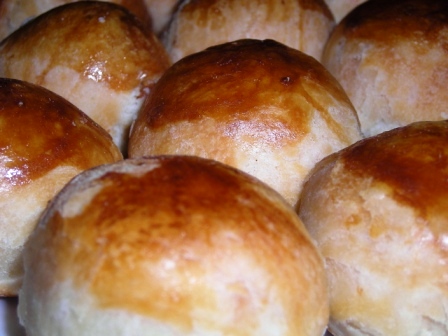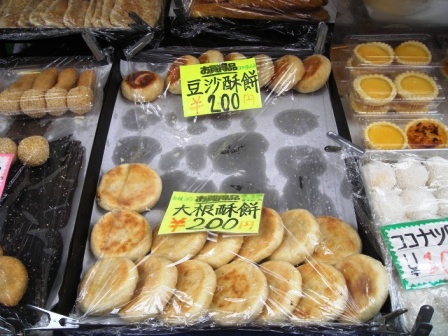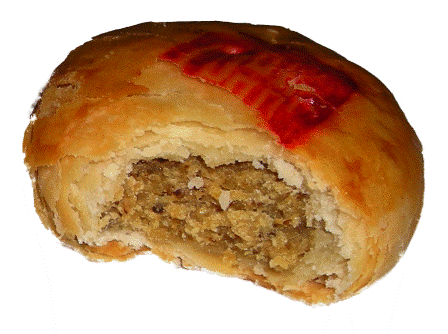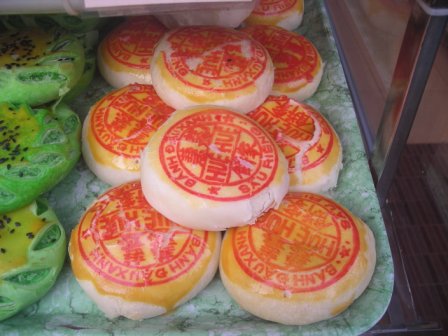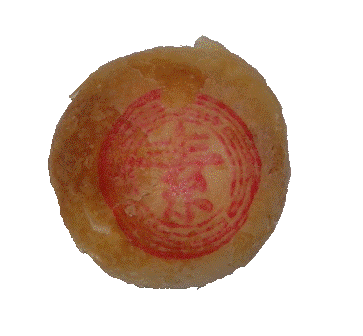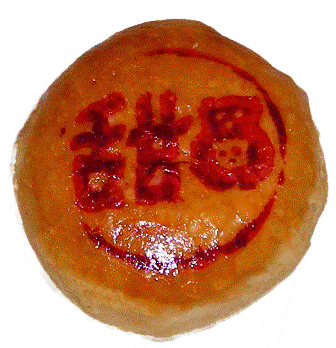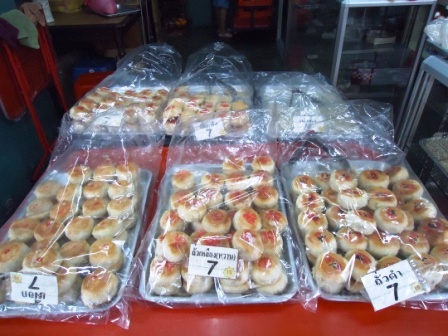Bean Paste Pastry 豆沙饼
Mandarin: Duo Sha Bing
Hokkien: Tau Sa Piah
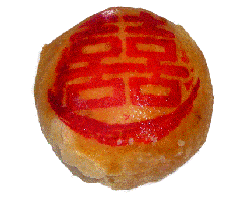 Bean paste pastry 豆沙饼 is a traditional Chinese baked pastry containing bean paste. It is one of the most popular Chinese pastries and is consumed throughout the year and sold through traditional and modern confectionary shops, supermarkets and convenient shops in most Chinatowns around the world. Bean paste pastry 豆沙饼 is a traditional Chinese baked pastry containing bean paste. It is one of the most popular Chinese pastries and is consumed throughout the year and sold through traditional and modern confectionary shops, supermarkets and convenient shops in most Chinatowns around the world.
The bean paste pastry can be wrapped in clear plastic or in white or pink paper and sold in quantities of 5 or 6. It can also be displayed on a rectangle tray and sold individually.
Bean paste pastry is usually available in sweet or savory versions. Some shops have begun offering durian and green tea flavored bean paste pastry.
During its production process, information or decoration is printed on it. The final product is a golden brown pastry with a red chop on its crust. A red circle usually surrounds the red characters. Sometimes, sesame seeds are sprinkled on top of the crusts.
The bean past pastry’s chop serves aesthetic, ceremonial, product information and/or branding functions. Among Chinese pastries, the bean paste pastry 豆沙饼 carries the most diverse information on its crust.
Product Information
The golden brown bean paste pastry is offered in sweet and savory versions. To communicate this information, it carries the character “sweet” 甜 or “savory” 咸.
Bean paste pastries can be produced with vegetable oil to meet vegetarian’s dietary requirements. Such products will be printed with the character for “vegetarian” 素.
Vegetarian versions are popular with vegetarian customers or customers who abstain from meat on the first and fifteen day of each lunar month or for ritual purposes. It is also popular with Muslim customers who accept food with no pork or lard.
Branding
Bean paste pastry from large producers or from well-known outlets carries the company/shop name on its crust. The chop creates brand differentiation and customers are willing to wait for a long time to be able to buy from well-known shops. Bean pastries from such shops are associated with good quality or exceptional taste.
Ceremonial / ritual purposes
Food plays an important role in Chinese ritual and social relations. The presenting of food between participating parties signifies the exchange of goodwill and relationship building between them.
For such occasions, the chop on the bean paste transforms the pastry into a ritually useful object. Bean paste pastries with a “double happiness” 双喜 are used during weddings ceremonies. Bean paste pastries used for other ceremonial purposes may have “luck” 福 printed on it.
Aesthetic
Majority of bean paste pastry sales are for private daily consumption. The chop adds to the aesthetic of the bean paste pastry. Some companies have introduced interesting and creative touch to their chop such as a teddy bear next to the product information.
Some shop does not add a chop to their product and gives their bean paste pastry a minimalist’s touch.
The bean paste pastry and its chop create multiple product functions and use values to meet different consumer or social needs. It is an interesting example of how finite resources can produce infinite possibilities.
Related articles:
|

 Bean paste pastry 豆沙饼 is a
Bean paste pastry 豆沙饼 is a 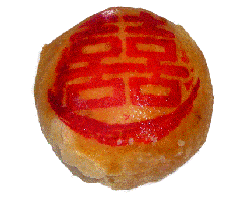 Chinese Pastries
Chinese Pastries